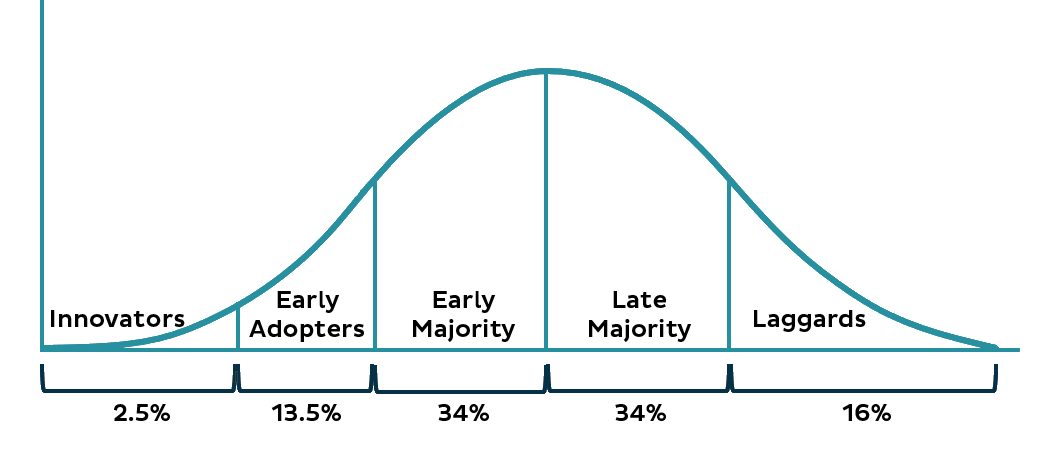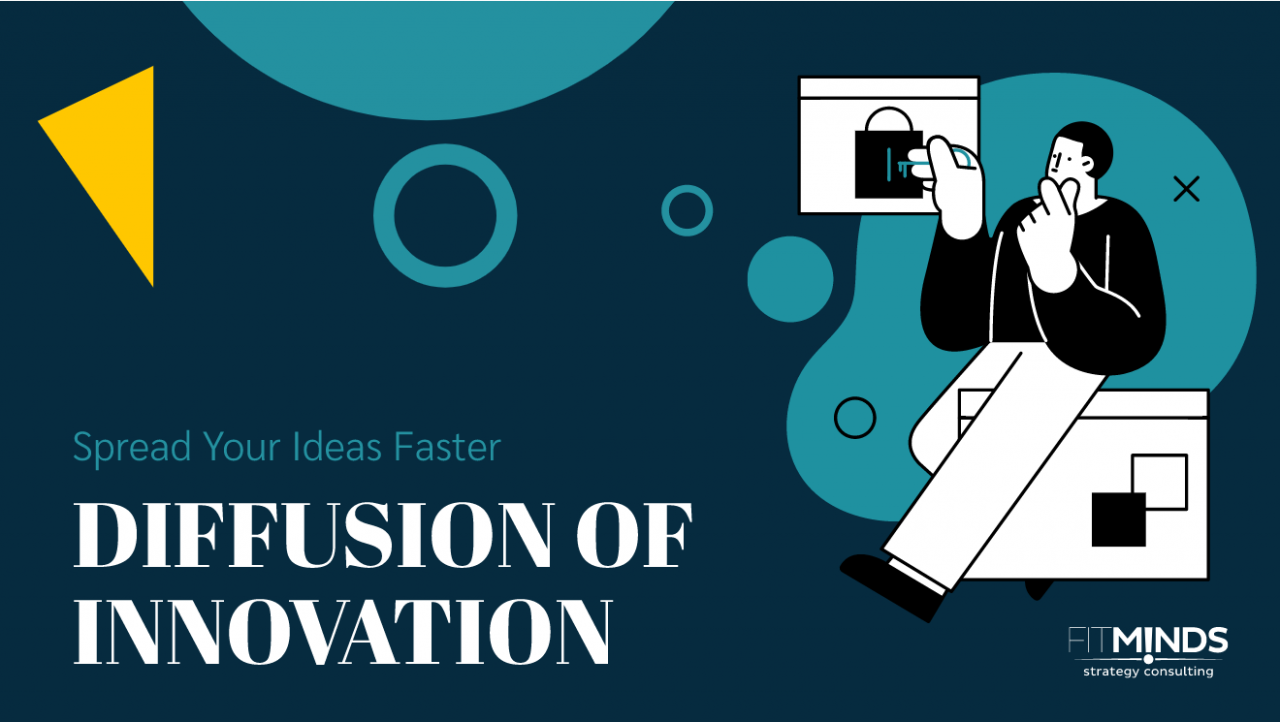What is the Diffusion of Innovation Theory?
Diffusion of Innovation Theory explains the impressions of emerging new ideas, lifestyles, and technologies on people. Besides, it analyzes the adaptation process of people to these ideas and how these ideas spread.
According to the theory, 4 different elements affect the spread of innovations:
- Innovation – the thought, practice, or object perceived by individuals.
- Communication Channels – ways to diffuse the innovation from one individual to another.
- Time – the decision-making process that will show whether the innovation will be embraced by members of the social system.
- Social System – a cluster of interrelated individuals who have a common goal and who engage in joint problem-solving.
It is important for companies to promote their products or services in the shortest time possible. Therefore, diffusion of innovations is used to enable companies to manage the spread of new products or services with the right strategies and to understand the deployment process.
Characteristics that affect individuals’ decision to adopt or reject an innovation are:
- Observability: Making potential adopters observe the possible benefits of using an innovation. If people are not sure what they should expect, they are less likely to try.
- Relative Advantage: It provides a measure of how the prominent features of the innovation are superior to the previous ones.
- Simplicity: The easier the perception of innovation, the easier it is to adopt.
- Trialability: Being able to try an innovation will help individuals adopt it.
- Compatibility: There is a direct proportion between an innovation’s compatibility with the real-life and individuals’ adoption rate of that innovation.

How to Apply the Diffusion of Innovation Theory?
When incorporating this theory into your marketing strategies, it is necessary to identify your potential adopters. The adaptation process to innovations varies depending on time and people. These people can be examined under five different categories:
- Innovators: Innovators are those who understand the resulting idea or invention thanks to their ability to apply complex technical knowledge. They are individuals who can dare to take risks, who are younger, who are at higher levels of socioeconomic status, who do not have financial liquidity problems, and who have scientific resources and social system networks. Innovators are curious and enthusiastic individuals. When a new idea, product, or service comes up, they are ready to try.Strategies that can be used to approach innovators include:
- Make sure your product is apparent.
- Listen to their feedback.
- Early Adopters: Early adopters are the biggest opinion leaders among many other categories, and they are the second fastest to adopt an innovation. Those in this category are younger, higher in the socioeconomic hierarchy, and more financially liquid. They have more rational adoption preferences than innovators. In this way, they maintain central communication issues. They are more concerned with the outcome than the customer experience.Strategies that can be used to approach early adopters include:
- Try to understand what they really need. Early adopters are curious and tend to ignore minor glitches.
- Meet them and introduce your product.
- Let them use your product. Give early adopters the opportunity to put their curiosity into practice. This way, your potential customer can assist you during the product development process.
- Use social media marketing effectively. They use many social media apps from Reddit to Facebook.
- Early Majority: Early majority are those who frequently interact with others. In the process, they adopt innovation over a longer period of time than innovators and early adopters. Those in this category have an above-average socioeconomic status. There is an exchange of ideas among early adopters and they may have less frequent opinion leadership positions.Strategies that can be used to approach the early majority include:
- Strengthen the communication of early majorities with early adopters who are more likely to be opinion leaders. In this way, early adopters might appear as role models.
- Use word of mouth in advertising.
- Emphasize the relative advantage of your innovation over previous ones.
- Late Majority: Late majority are those who have a careful and skeptical approach towards new ideas. Once the average of the members of the social system adopts innovation, then they do. Their social status is below average, they interact with the early majority and late majority. It is not very expected for them to have opinion leadership. Customer experience matters to them.Strategies that can be used to approach the late majority include:
- Try to make them interact with the early majority. In this way, they can understand that innovation is nothing to be afraid of.
- Put an emphasis on the fact that everybody is using your product/service.
- Laggards: Laggards will adopt late due to suspicion of innovations. These are the last to adopt an innovation. They behave more conservatively in order to preserve the old relatively. Individuals in this category are of the lowest social status, they have low liquidity, they are older, they and interact only with family and close friends.Strategies that can be used to approach laggards include:
- Demonstrate that the adoption of innovation is now a necessity and try to ease their worries.
- Present the innovation as simple as possible. Complexity can be a deterrent for them.
Conclusion
The adoption of a new idea, product, or service by potential customers takes place in a process that varies from individual to individual. It is necessary to categorize the members of the system correctly in order to spread the adoption process of innovation into the social system. Then, different marketing strategies should be developed by analyzing the needs and characteristics of individuals from different segments.
Contact us to make sure your innovation spreads in the best way possible.




13 comments
Pingback: ordering androxal canada internet
Pingback: buy enclomiphene generic enclomiphenes
Pingback: buy cheap rifaximin cheap info
Pingback: best price for xifaxan
Pingback: buy cheap staxyn generic overnight shipping
Pingback: get avodart generic information
Pingback: order dutasteride generic vs brand name
Pingback: purchase flexeril cyclobenzaprine generic side effect
Pingback: cheap gabapentin no prescription next day delivery
Pingback: ordering fildena price canada
Pingback: buying itraconazole cheap prices
Pingback: koupit kamagra online kanada
Pingback: kamagra rabais en ligne
Comments are closed.